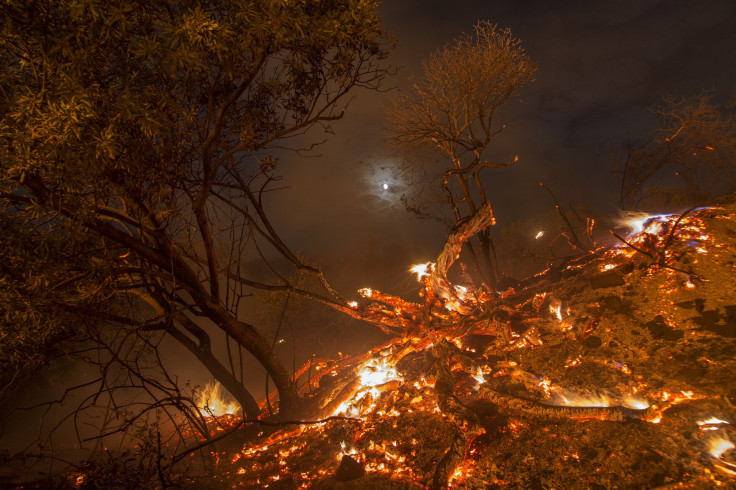Wildfire Deaths: How Smoke Inhalation, Toxic Air Pollution Kills People

Wildfires are burning throughout northern California, driving people from their homes and making a lot of dangerous work for firefighters. Sonoma County was evacuating its residents as the city Santa Rosa, where a fire started near the highway Sunday night, went up in flames.
What makes these types of fires so deadly?
California is particularly well known for suffering from wildfires. Western states like Nevada, Utah, Arizona and Oregon are also frequently hit, as are southern states such as Florida and Texas. But wildfires can light up anywhere it is dry enough, including places that are going through a period of little rainfall. Once the plants are low on moisture, a natural event like a lightning strike or a manmade spark from a campfire or a cigarette can start a fire that spreads tremendously, assisted by high winds.
The National Fire Protection Association reports that more than 5.5 million acres of land burned in more than 67,000 wildfires last year, taking thousands of homes with them.
That group tracks wildfire activity with a map on its website.
The National Weather Service also keeps an updated, interactive map tracking “fire weather” in the United States, with color coding that indicates the level of risk of fire for different areas. The Wildland Fire Assessment System has a similar map.
Wildfires are so dangerous because of their conditions. Flames can reach dozens of feet into the air and the dry conditions and wind can make them move rapidly, potentially catching people in its crosshairs. The heat from the blaze is intense.
Another danger of wildfires is the intense air pollution that comes off of them. When people die in fires, it’s typically smoke inhalation that kills them, rather than burns. With a wildfire, that smoke inhalation would include some pretty toxic stuff.
Scientists reported earlier this year that the smoke from burning timber and brush might have three times more fine particles than the U.S. Environmental Protection Agency has previously estimated. Those fine particles pollute the air and travel to other areas, posing risks to people’s lungs and hearts. And wildfires could be emitting proportionally more than industrial sites.
To measure the air pollution created by wildfires, the group of researchers on that project boarded instrument-filled planes and flew right through the smoke that was gushing out of wildfires in California.
“The smoke leaks into the cabin and makes you nauseous,” researcher Bob Yokelson, a University Montana professor, said at the time.
The smoke also contained the toxic chemicals like methanol and benzene.
“You can see the smoke, and it’s dark for a reason,” researcher Greg Huey said. The fine particles in wildfire smoke “are really bad aerosols to breathe from a health point of view.”
It’s possible that the smoke from wildfires also have an effect on the global climate. Scientists are still unsure of the extent, however, because some aerosols would reflect light from the sun back into space while others would trap the heat in Earth’s atmosphere.
© Copyright IBTimes 2024. All rights reserved.





















